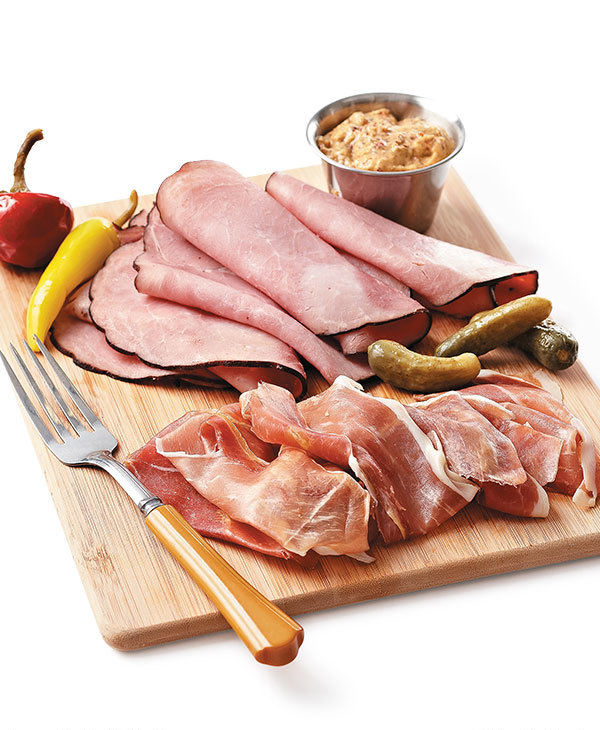Choosing the Right Ham
There are many different varieties of ham. What distinguishes them, and which should you roast for Easter dinner?

From antipasto to a traditional Easter dinner, there are many varieties of ham. Fresh hams do exist, but they're almost always cured before reaching the consumer. It's the type and duration of the curing process that determines flavor and texture. Since curing also prevents bacteria, it was a lifesaver before modern refrigeration, but many cures today are milder and the meat must still be refrigerated.
-
The deli or Sunday ham that likely comes to mind first is wet-cured. It undergoes a relatively quick process of soaking in or injecting a salt-based brining solution, then it's partially or fully cooked without "maturing" for any length of time. The result is moist, mild-tasting meat.
-
For the easy and delicious Roasted Ham in this week's recipe, a bone-in, spiral-sliced, smoked ham is perfect. The bone lends tons of extra flavor and keeps the meat juicy, the spiral slicing makes serving a cinch, and smoking gives it its signature flavor.
-
Hams with a drier, coarser texture — like prosciutto, Serrano, and Black Forest — fall into the dry-cured category. They're rubbed with a dry salt mixture, which over the course of several months or a year, draws moisture out of the meat, concentrating the flavor. Some are only "cooked" by this process, others go on to be smoked, but either way, these types of ham are safe to eat out of the package unless the label specifies otherwise.
Product Recommendations
Interested in cooking? Need some supplies?
Check out some of the tools we like. All products featured on Cuisine at Home are independently selected by our editors; we may earn an affiliate commission from qualifying purchases through our links.